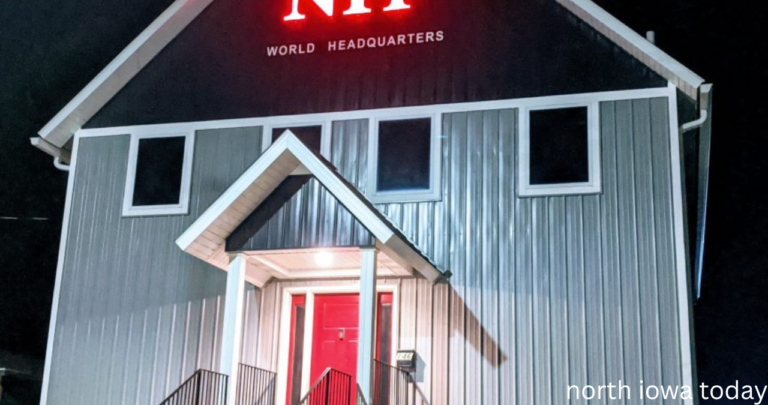
monkey carrying a box
Introduction
In a world overflowing with digital media, viral images, and symbolic interpretations, one seemingly simple imagea monkey carrying a box—has captured widespread curiosity. It’s a sight that blends the whimsical with the profound, sparking questions both scientific and symbolic. Is the monkey on a mission? Is the box filled with treasure or trouble? Whether viewed literally or metaphorically, this curious visual opens doors to rich exploration in animal behavior, cultural meaning, and creative imagination.
Why does this image intrigue us so much? Perhaps it’s the unexpectedness. Monkeys, known for their mischief and cleverness, evoke amusement when caught in human-like scenarios. The box, on the other hand, carries centuries of symbolic weight—mystery, containment, burden, or surprise. Put the two together, and you have a scene ripe for interpretation, analysis, and storytelling.
This article dives deep into the layers behind this curious concept—from real-world primate behavior to age-old symbolism, from pop culture references to educational uses. Whether you’re a biologist, an artist, a teacher, or just someone with a wild imagination, join us as we unpack what it really means when a monkey carries a box.
The Real-World Behavior: Why Would a Monkey Carry a Box?
Monkeys are remarkably intelligent animals with problem-solving abilities that often mirror those of young humans. Across species like capuchins, macaques, and chimpanzees, primates have been observed using tools, understanding cause-and-effect relationships, and engaging in complex play. Carrying a box, while amusing to us, can be a reflection of natural curiosity and cognitive function in these animals.
One reason a monkey might carry a box is simple exploration. Just like human toddlers, monkeys learn through interaction with objects. A box presents something new—potential shelter, a hiding place, or even a plaything. Studies in primate behavior have shown that monkeys often engage with objects in novel ways, testing their limits and uses. For example, capuchins have been recorded carrying containers to scoop water or to store food, demonstrating both foresight and utility.
Additionally, this behavior is often observed in environments where monkeys interact with human-made settings. In sanctuaries or urban areas, monkeys are exposed to new stimuli—discarded packaging, crates, or cardboard boxes. Their interaction with these items may serve as enrichment, stimulating mental activity and relieving boredom. In some cases, the act may be a direct result of mimicry; monkeys often copy what they see humans do, especially if they associate the behavior with rewards like food.
Ultimately, a monkey carrying a box is more than a cute oddity—it’s a window into the animal’s intelligence, adaptability, and capacity for interaction with its environment.
Symbolism and Cultural Interpretations
Throughout history, animals have played symbolic roles in human culture, mythology, and art—and monkeys are no exception. Representing everything from mischief to enlightenment, monkeys appear in many global traditions. When paired with a box, the symbolism becomes layered and even more intriguing. The image transcends the literal, tapping into deeper cultural and psychological meanings.
In Eastern cultures, monkeys often symbolize agility, intelligence, and trickery. In Chinese mythology, Sun Wukong, the Monkey King from Journey to the West, is both a rebel and a hero. In Hindu tradition, the deity Hanuman represents strength, loyalty, and devotion. These mythological figures wield powerful tools, carry burdens, and often challenge authority—all traits that echo in the image of a monkey carrying a box. Could the box represent duty? Knowledge? A secret?
The box itself is a universal metaphor. It can represent the unknown—like Pandora’s box in Greek mythology, which when opened, unleashed all the world’s evils. In psychological terms, a box can symbolize repression or mystery, something tucked away in the subconscious. When a monkey—a symbol of curiosity and chaos—carries a box, the implications are rich. Is it about revealing truth? Protecting secrets? Carrying emotional baggage?
Artists and storytellers often use such visuals to provoke thought. The monkey becomes a stand-in for the human psyche, the box a symbol of what we carry, hide, or fear. This blend of animal nature and human symbolism creates a potent narrative that speaks across cultures and time
Monkey Carrying a Box in Pop Culture and Media

In today’s digital age, even the most obscure visuals can gain unexpected traction. The image of a monkey carrying a box has become a surprising but amusing internet trope. Shared in memes, videos, and animations, it often symbolizes the absurdity of daily life—like the feeling of taking on responsibilities you don’t understand or carrying emotional “baggage” you didn’t ask for.
Memes often rely on surreal humor, and this image fits perfectly. It’s visually amusing but conceptually flexible. In one viral clip, a monkey struggles to carry a box that’s far too big for it, sparking jokes about work stress or adulting. In another, a cartoon version of the monkey places the box on a shelf, triggering hilarious “Monday mood” captions. The visual absurdity paired with relatability makes it a perfect fit for meme culture.
Beyond the internet, the image has crept into art, animation, and even advertising. Animated shorts and children’s shows use animals in human-like scenarios to engage audiences and deliver moral lessons. A monkey carrying a mysterious box can be part of an adventure, a metaphor for self-discovery, or the start of a treasure hunt. The versatility of the concept makes it appealing to storytellers across genres.
The enduring appeal lies in its open-endedness. Is the box a gift or a burden? Is the monkey lost or on a mission? These questions keep the imagery alive and evolving, showing how even a simple scene can ignite the collective imagination
Creative Explorations and Educational Uses
The concept of a monkey carrying a box lends itself beautifully to creative projects, educational activities, and storytelling prompts. Teachers and parents can use this image to spark imagination, develop critical thinking, and encourage storytelling in children. It’s simple yet full of potential, making it an excellent tool for both classroom and home learning.
In creative writing, the prompt “Why is the monkey carrying a box?” opens endless narrative possibilities. Perhaps the monkey is delivering a secret message, protecting a magical artifact, or carrying something that no one else can. This kind of open-ended question encourages students to think outside the box—pun intended—and build cohesive stories around abstract ideas.
In visual arts or crafts, children can draw or build their own version of the scene. What does the box look like? What’s inside? Is the monkey happy, confused, or determined? These questions help develop emotional intelligence and storytelling through visual expression.
Educators can also tie the image into broader themes—ethics (what if the box contains something dangerous?), science (how do animals learn to use objects?), or even philosophy (what are the things we carry in life?). The metaphorical depth of the image allows it to be tailored to various educational levels and subjects.
In short, this curious concept is not just a fun thought experiment—it’s a springboard for learning, creativity, and self-reflection.
Conclusion
The image of a monkey carrying a box may seem quirky at first glance, but it carries a world of meaning underneath its surface. Scientifically, it reflects the intelligence and adaptability of primates. Symbolically, it merges the wild with the mysterious, creating rich opportunities for cultural and philosophical interpretation. In media, it’s both a source of humor and a vessel for deeper stories. And in education, it serves as a powerful prompt for imagination and inquiry.
By exploring such a simple visual through different lenses, we come to appreciate the complexity that can exist in the most unexpected places. So the next time you see a monkey carrying a box—whether online, in art, or in your own imagination—pause to ask: what’s really inside the box?
FAQs
Q1: Is there a scientific reason monkeys carry objects like boxes?
Yes. Monkeys often carry objects due to curiosity, play, or tool use. Boxes can provide stimulation, mimicry of human behavior, or even serve practical functions.
Q2: What does a monkey carrying a box symbolize in dreams or art?
It can symbolize hidden knowledge, emotional baggage, curiosity, or the burdens we carry—both literal and metaphorical.
Q3: Are there any famous stories or myths involving monkeys and objects?
Yes. Hanuman in Hindu mythology and Sun Wukong in Chinese folklore both involve monkeys with powerful objects or responsibilities.
Q4: How has this imagery been used in internet culture?
It has been turned into memes and viral videos, often to reflect humor, stress, or absurdity in everyday life.
Q5: Can the idea of a monkey carrying a box be used for educational purposes?
Absolutely. It’s a versatile prompt for storytelling, critical thinking, and emotional learning across age groups.
Q6: What are some creative ways to explore this concept with children or students?
Writing stories, creating drawings, building dioramas, and using the scene as a metaphor for discussion topics are all effective methods.
Q7: Where can I find videos or real-life examples of this behavior?
YouTube, wildlife documentaries, and animal behavior research journals often showcase monkeys interacting with objects, including boxes.
You May Also Read: https://usabuzwire.com/66-ez-2/





